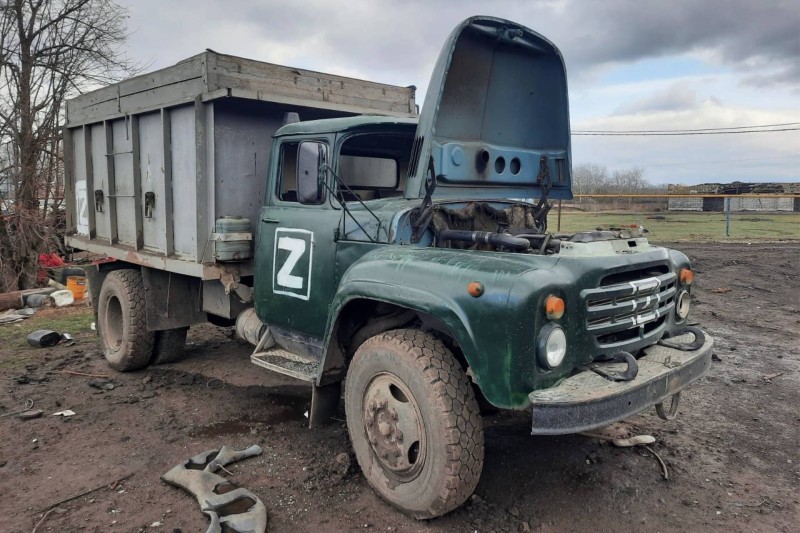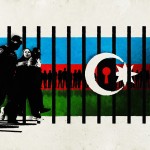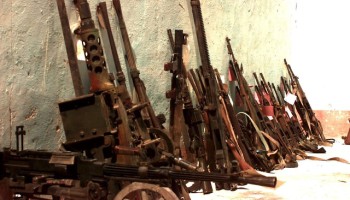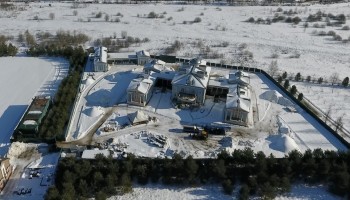At the start of its invasion of Ukraine, the Russian army was considered one of the strongest in the world. In 2022, the force consisted of 900,000 military personnel — the world’s fifth largest, surpassed only by the United States, China, India, and possibly North Korea, according to the International Institute for Strategic Studies (IISS).
In terms of materiel, Russia possessed more than 12,000 tanks, 6,000 self-propelled artillery vehicles, 3,000 multiple-launch rocket systems, and about 7,000 towed artillery pieces. Its stockpile of nuclear warheads is larger than those of all NATO countries combined.
By these indicators, drawn from a 2022 IISS study, Russia surpassed every other military on the planet.
How did this formidable military machine end up almost literally bogged down in what was supposed to be a “short, victorious war” (to borrow a phrase attributed to Tsar Nicholas II)?
Some sources say President Vladimir Putin was misled, both before and during the operation. Others point out that soldiers and junior officers were not ready for actual combat, given the secrecy in which preparations were made. Experts and military officers interviewed by OCCRP both mentioned these considerations.
However, most agreed that the campaign’s failures were also rooted in another key factor: Corruption.
The problem isn’t just that in the army — to put it simply — people steal, be that equipment, fuel, or uniforms. There is also a lack of transparency in key data, such as rearmament numbers and costs, which opens opportunities for graft. Nepotism, theft, and embezzlement also affect the training process, both in peacetime and during other “special operations” in Ukraine and Syria. Corruption undermines communication and supply lines just as much as enemy mines do.
Ultimately, experts say, it is corruption in the Russian military that may save Kyiv.
New Hardware
The Russian army has been preparing for a possible operation in Ukraine for over a decade. In 2007, Anatoly Serdyukov was appointed defense minister with a mandate to reform the armed forces. That process was accelerated by the eight-day war with Georgia, which showed that Russian troops were not ready to fight protracted, modern conflicts.
“Before Serdyukov, we had, in actuality, the Soviet army — huge, clumsy, with outdated equipment, a lack of personnel,” one senior military officer told OCCRP.
Although Serdyukov “stole everything that wasn’t nailed down,” he did in fact carry out a substantial reorganization, the officer said. Previously, the Russian army had used so-called “cadre brigades,” many of which were composed of reservists and therefore not able to quickly mobilize into an effective fighting force. Serdyukov replaced these “paper troops” with battle-ready tactical groups, which were first deployed in eastern Ukraine in 2014.
Former Russian Defense Minister Anatoly Serdyukov (left) with former Moscow Region Governor Boris Gromov (center) and Dmitry Medvedev, at that time President of the Russian Federation, 2011 (Photo): kremlin.ru, CC BY 3.0)
Serdyukov's term ended in scandal, although numerous criminal cases and investigations over corruption and other charges against him led nowhere in the end.
His successor, Sergei Shoigu, pressed forward with the reforms. However, Shoigu’s focus was less on reorganizing the army’s structure and more on building up its armaments, experts say.
Starting in 2013, Shoigu began to issue regular public reports on the implementation of defense procurement. As of January 2022, the ministry reported the “percentage of rearmament” — in theory an indicator of what portion of the military’s materiel was new — to be more than 70 percent.
But this figure was “absolutely fictitious,” one military expert told OCCRP. “You can’t check it independently, and we all know how well they can draw it up,” he said.
A military researcher said Shoigu's numbers "don’t correspond to reality."
“We see new models of equipment — missiles, tanks, submarines — but in individual instances,” he said.
The senior military officer told OCCRP that the scale of the Russian army made rearmament an inherently difficult task.
“This task, to put it mildly, was not fulfilled,” he said. “At least, it was not executed in the way that was reported to the president every year.”
Scandals and Theft
The “massaged numbers” reported by the Defense Ministry may have made Moscow overconfident in a lightning victory over Ukraine, experts and military sources said.
“We have dozens of exercises every year — parades, demonstration launches. How can one not believe in the invincibility of the army?” the military expert said.
The expert did not think that Shoigu was creating “Potemkin villages” for Putin — that is, weapons really were delivered to the army. But the lack of transparent data made it almost impossible to estimate the proportions, which in any case seemed to fall well shy of the 70 percent the ministry described.
The problem is not under-spending. In 2022, Moscow allocated $61.7 billion for the military, the fourth biggest military budget in the world, according to the Stockholm International Peace Research Institute (SIPRI). Relative to GDP, Russia outranks even the United States, with 4.3 percent of its economic output going to the military, versus 3.7 percent.
But a second expert said that while these were “impressive numbers,” most observers
“don’t understand at all what this money is spent on. We don’t have any opportunities to control, check these expenses.”
Military parade on Red Square on May 9, 2018 (Photo: kremlin.ru, CC BY 4.0)
One sign of troubles behind the ministry’s rosy reports is the criminal cases involving manufacturers of armaments and other military equipment. Over the past year alone, several arrests have been made related to the disruption of supplies and imports being substituted in the defense industry, according to media reports.
According to a second researcher, specialized in military production, this is likely just “the tip of the iceberg,” since cases are usually only brought when “someone somewhere has become impudent, someone somewhere has crossed the path of someone higher up,” he told OCCRP.
“They steal everywhere over there,” he said, pointing to a 2020 case in which retired officers working for the Defense Ministry allegedly attempted to extract millions of rubles in bribes to help a company win a state contract to supply inflatable mock-up tanks.
Despite such volumes of theft, the equipment displayed at “high-profile events” was still high-quality, the high-ranking military officer told OCCRP.
“We can still pull that off,” he said.
In the Field
The main theaters in which the Russian military has been recently tested in practice were eastern Ukraine in 2014 and Syria in 2015.
In both cases, however, the intervention was either limited in scope or not even publicly acknowledged. Officially, Moscow still says its regular army did not take part in the 2014 fighting between regional separatists and the Ukrainian army.
Tens of thousands of Russian soldiers passed through Syria, but on an ongoing basis. Those who took part in combat were mostly military pilots and aircraft crews. Russian soldiers "on the ground" were mainly limited to guarding facilities, ensuring the operation of airfields, and reconnaissance.
That experience “cannot be compared with what is happening in Ukraine now,” where the army is using “real manpower against the real manpower of the enemy,” the first military expert told OCCRP.
The first military researcher pointed out that, although Russia carried out missile launches and fleet exercises in Syria, the conflict did not give a strong indication of how ready the military was for a major ground operation: “The Islamic State does not have any fleet or air force,” he said.
“It’s one thing to level some underground passages and tents in the desert with rockets every day, it’s another thing to fight on the ground after these air strikes.”
Vladimir Putin with military pilots of the Russian Aerospace Forces at the Khmeimim airfield in Syria, 2017 (Photo: kremlin.ru, CC BY 3.0)
Experts said that the high number of air sorties, attempted high-precision strikes, and even the content of the Defense Ministry’s daily media briefings, all suggest the military was relying on the Syria experience in the invasion’s early days.
But that campaign did little to prepare ground troops for “a thousand things that you couldn’t think about so much in Syria,” the second expert said.
One retired soldier who fought in eastern Ukraine in 2014 put it this way: “Money was still found for machinery, equipment, some developments, but for equipping the army itself, and training it after Serdyukov’s reforms, they somehow forgot.”
The Human Factor
Poor training and low morale also appear to be factors, experts and soldiers said.
A lawyer for an army-related human rights project told OCCRP that “conscripts are not prepared normally at all.”
“Contract soldiers are getting worse and worse. Exercises are canceled, live fire training, too,” he said. “People seem to join the army, but they do chores — repair the barracks, mow the grass.”
A junior officer with a unit taking part in the Ukraine war said that only the unit’s reconnaissance company — who had served in Syria and eastern Ukraine — did regular exercises.
Another soldier who drove a tank in a unit in eastern Russia said there was no diesel available for their training runs.
Virtual simulators should have helped make up for this, but “something happened” to them, the soldier said. Describing the simulators used in his unit, he referenced an old Soviet joke about a soldier asking to watch TV: “You can watch it, but don’t turn it on.”
A T-80BVM tank at the military parade on May 9, 2021 (Photo: kremlin.ru, CC BY 3.0)
One teacher also described problems in training higher-level officers. Instructors were not always of the best quality: “If there’s some kind of retired major not from the first cohort, then that’s it, consider the training totally screwed,” he told OCCRP.
While the problems were never “too harsh,” such an instructor might “bring cognac to a test, shout at everyone in formation, put everyone in plank position — this is the norm,” the teacher said.
Corruption and hazing — the practice of humiliating new conscripts — also contribute to low morale, servicemen said. While military officials claim such practices have been eradicated, high-profile cases such as one in which a conscript shot his fellow soldiers, show that is not the case.
The lawyer for the human rights project said they were “constantly being contacted” over hazing issues. While egregious cases may have declined, “petty bribes, psychological pressure, light beatings ‘for educational purposes’ and other seeming relics of the Soviet army still persist.”
These practices can create distrust and an unwillingness to serve, he said. In one recent example, the Conflict Intelligence Team (CIT), a Russian analyst group, published a video from March 3 showing soldiers complaining that commanders had “thrown them stupidly like cannon fodder."
“The orders of commanders and chiefs, as it is written in the oath, are sacred. But usually no one believes them,” one soldier fighting in Ukraine told OCCRP. “It’s every man in the army for himself.”
Natural Result
Supply problems are also reportedly rife.
In the video shared by CIT, one voice claims that the soldiers there had not “eaten normally” in three or four days.
Another video, published by the Ukrainian military, claims to show captured dry rations that expired in 2015. The veracity of the video could not be confirmed, but the high-ranking military officer said that expired rations were common in the army: “They lie in warehouses for years, no one needs them. Why throw them away now? It’s canned food, what’s going to happen to it?”
Three soldiers participating in the Ukraine campaign also told OCCRP that their units had problems with warm clothes, fuel, and spare parts for military equipment, mainly trucks.
“March was cold, and we even had nothing to heat the stove with. It’s good that they brought the stoves themselves, otherwise I heard that many didn’t even have them,” one said.
Another recalled: “They gave me a raincoat, but in the company about a quarter of the boys were left without them … they promised to bring more of them, but of course they didn’t, and then everyone found a way to share somehow.”
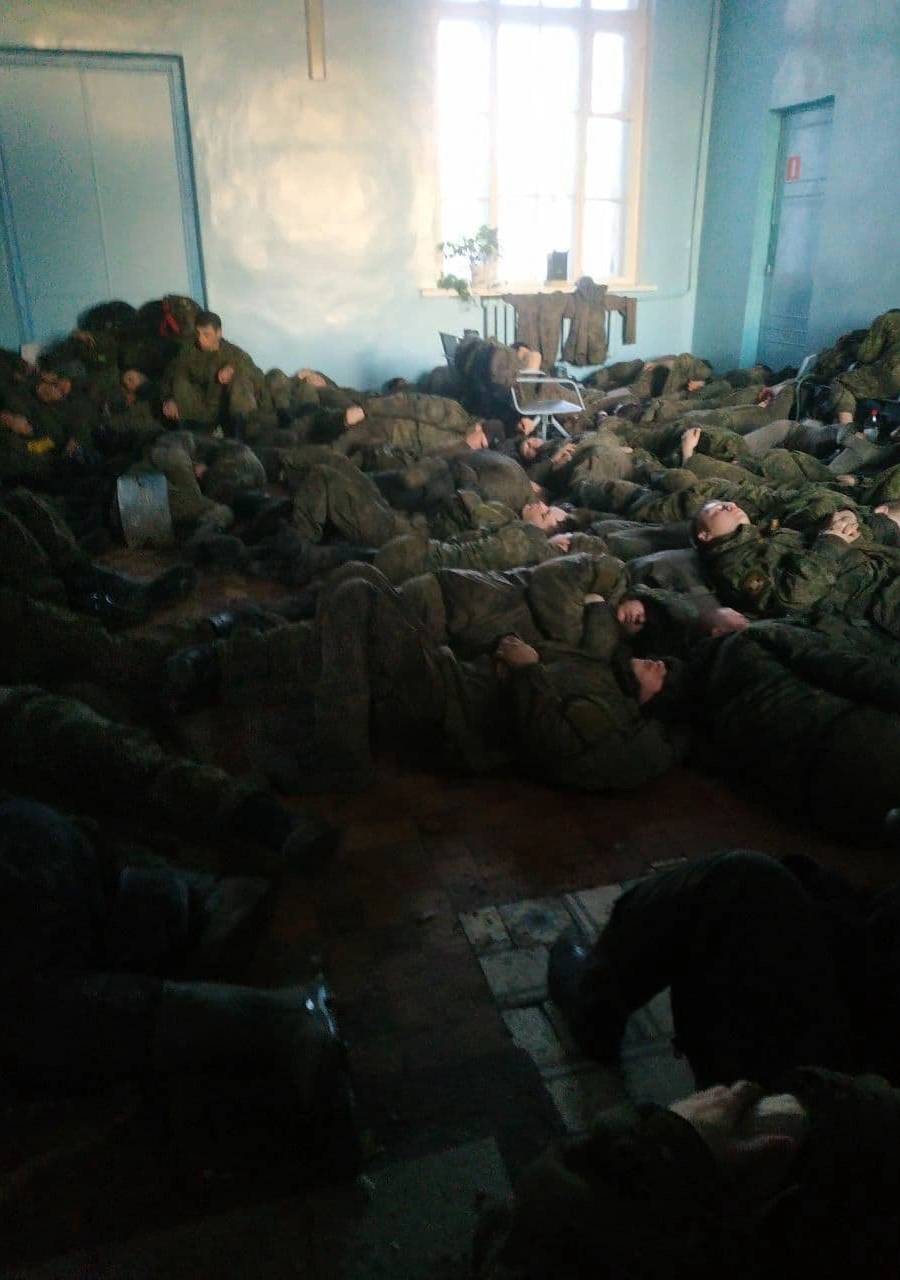 Russian soldiers at a railway station on the border with Ukraine (Photo: Twitter / @RALee85)
Russian soldiers at a railway station on the border with Ukraine (Photo: Twitter / @RALee85)
The clothing and fuel shortages have also been confirmed by intercepted conversations and Western intelligence data — leaks ironically made possible by another shortage, this time of communication means. In place of secure channels, the Russian military has reportedly used ordinary phones and Chinese household radios.
One serviceman complained that even though proper military radios were available, they were not distributed properly. “For me, this is a complete mystery,” he said.
What’s Next?
The forces that participated in the battles near Kyiv have returned to Russia and are preparing for a new attack focused on the Donetsk and Luhansk regions.
The second military expert expected that the new, more limited focus would likely ease some supply and logistical problems. But he added that this would not eliminate questions about the readiness of equipment and the lack of important items, such as radios.
With this second stage of Russia’s campaign underway, it is also unlikely that senior officials will be tackling the root issue of corruption any time soon, experts and military sources said.
“They won’t change horses at the crossing, but I’m sure that heads will roll later,” the researcher specialized in military production said, adding that “we won’t hear anything about this, most likely.”
The researcher recalled that the last high-profile military corruption case was the accusation that 300 tons of fuel disappeared at the Kapustin Yar training ground. The head of the landfill was charged with taking a two-million-ruble bribe, and put under house arrest.
The high-ranking officer said that while many of these cases were “little things,” that collectively “such little things form the picture that we see in Ukraine now.”
“How to fix it?” he said. “I think it’s not for us to decide.”
